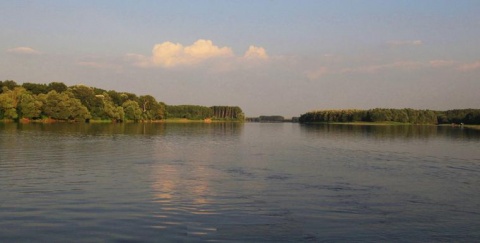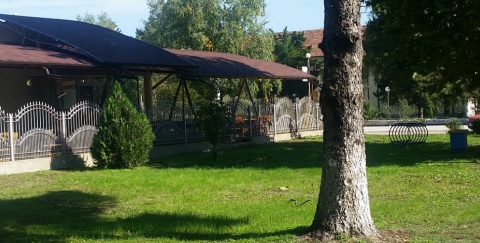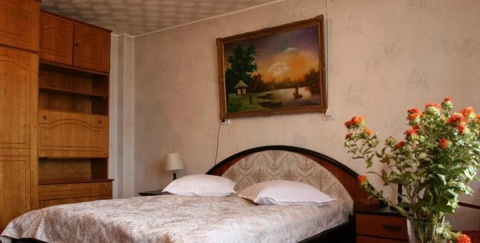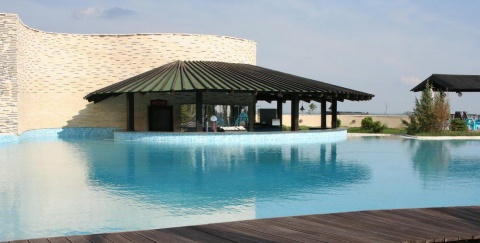

Călăraşi County
Calarasi County is situated in the South – East of Romania, on the left bank of the Danube River and on the Borcea branch, neihbouring to the North with Ialomita County, to the South-East with Constanţa County, to the West with Giurgiu County and Ilfov County and to the South, across the Danube ...
Country: Romania
The region has an attractive tourist potential that allows the development of different forms of tourism: cultural, religious, green tourism and agro tourism.
Beautiful places, with great historical and emotional loading spread all over Călăraşi County.There are various archeological sites, located mostly on the bank of the Danube, bringing up ancient civilisations to our present days.
- The Eneolithic settlement of Sultana, Commune of Mânăstirea/Călăraşi County, is a special case of Romanian Eneolithic. It was the first Gumelniţa site submitted to scientific research in the '20s of the last century. More recently, after 1975 it was researched almost entirely. One of the great discoveries of the last years has been made recently: a fired housing from 6000 years ago, where more than 150 potteries, 300 stone/silex tools and ornaments could be found.
- Gumelniţa – Eponym settlement of Gumelniţa Culture (4th Millennium b.Ch). The prehistoric settlement from 4600-3900 BC in Căscioarele, belonging to Gumelniţa culture, presents interesting architectural models.
Many of these historical vestiges can be seen at Calarasi Lower Danube Museum, important tourist attraction located near Calarasi Prefecture Palace.
The building which houses the museum is itself an architectural monument dating back from the 19th century and creating the perfect ambiance for all five collections of the institution: Archeology, Art, Ethnography, History and Numismatics.
On the 9th of June 2012, the section "Treasure and Archaeology" of the Lower Danube Museum Calarasi was opened in a new location in Calarasi, on the Street 1 Decembrie 1918 (the basement of Calarasi County Council building). The event is the result of a sustained effort over two years from the county council and museum professionals. The building was designed and equipped with the latest modern equipment, providing security in accordance with the law. This has made possible the first exposure of exceptional pieces that are part of the museum's treasure (like coins, gold and silver ornaments), which illustrate the evolution of Danube heritage from prehistory to the end of antiquity.
Also part of the cultural heritage is the Gumelnita Civilization Museum from Oltenita(a small town in Calarasi County), founded in 1957 for recovering and presenting some important archaeological discoveries made along the banks of the Danube and Mostiştea Valley. The originality and unity of the exhibits make the museum representative for the study of Neolithic culture of Gumelnita. Of particular interest are the hoards of jewellery that were found at Radovanu-Neguleasa(16-17) or at Nuci, Chirnogi and Colibasi, which highlight the wide circulation of these products and the ability of residents to acquire them. Another attraction of the museum are the beautiful gold ornaments dating from feudal times. They were discovered with the occasion of the archaeological excavations made at Catalui-Cascioarele Monastery, the largest feudal monastic complex in southern Walachia (Muntenia). Other historical monuments:
- The historical monument from Cătălui (Căscioarele Commune) - it is the oldest historical medieval monument of the county. It consists of historical vestiges dating from the Bronze Age, the first Iron Age (Hallstatt), but there is mostly an architectural assembly, dated during 1560 – 1577 period, an old feudal housing, built by Stan from Corbi and his wife, Caplea (descendant from the voivode of Wallachia, Vlad Călugărul).
- The Orthodox church of the former Negoeşti Monastery - (Şoldanu Commune). It is a historical and religious monument, built by the will of prince Matei Basarab during 1648-1649. The architectural assembly of the monastery consists in the bell tower, the main house, the monk rooms and the great walls of the monastery. The history of Negoieşti Monastery has deep implications in the history of Wallachia. During Matei Basarab it has been a summer residence, where the prince issued 181 charters.
- Plataresti Monastery, situated in Plataresti Village (Plataresti Commune), it was built between 1639-1646, during the reign of Matei Basarab and repaired in 1777 and 1850, being one of the most beautiful monuments in the area of Wallachia. The name of the monastery and of the village comes from the Greek Plastara, who was the first abbot of the religious settlement. The church of the monastery is a historical and architectural monument, which is distinguished by the composition of its forms.
The natural resources of the Danube area are diverse offering an unique experience:
Caiafele Forest– natural reservation (ancient oak forest)
Ciornuleasa Forest- natural reservation (forest with trees older than 130 years)
Fundeni Forest – natural reservation (trees, hares, pheasants)
Tămădău Forest– natural reservation (forest)
Vărăşti Forest – natural reservation (ancient oak forest)
Special Area for fauna protection Iezeru Călăraşi – natural reservation (over 270 bird species)
Natural Reservation Haralambie Island – included in the biogeographically steppe area, in the eco-region Danube’s floodable meadow
Natural Reservation Şoimul Island – included in the biogeographically steppe area in the eco-region Danube’s floodable meadow
Natural Reservation Ciocăneşti - included in the biogeographically steppe area, in the eco-region Danube’s floodable meadow
The river created perfect conditions for the presence of a lush vegetation and an abundance of animals both in water and on land. Near the banks of the river thre are numerous animal species like hares and deer and birds like pheasants, partridge, wild ducks and quails. The waters of the river and the small pools located on its meadows abound in carp, gold fish, catfish, barbell.
The river banks are also a great recreational area due to the presence of two sandy beaches, ideal for summer outdoor activities or simply for enjoying a relaxing day in the sun.
One of the multitude of lakes in the area is Săruleşti Lake, one of the most famous lakes in Romania and one of the best carp fishing trail in the world. It is located 55 km from Bucharest, in Săruleşti-Sănduliţa Village, Călăraşi County. The lake covers an area of about 500 hectares, has a maximum depth of only 16m, with an average of 5-6m. It is populated with carp, bream, cteno, zander, bass, perch, pike, catfish, roach and other species. It is a real heaven for carp fishermen, specimens over 30 kg being frequently captured, which gave its name as the “Jurassic Carp” or “Big Fish Mecca”. In the World Top Ten carp catches, eight are from Săruleşti.
DANUBE.TRAVEL has no control over the website content generated by users and/or visitors, neither such content represents a statement, opinion, recommendation or rating by DANUBE.TRAVEL. For further information please refer to DANUBE.TRAVEL – General Website Terms and Conditions of Use.
 EN
EN DE
DE










